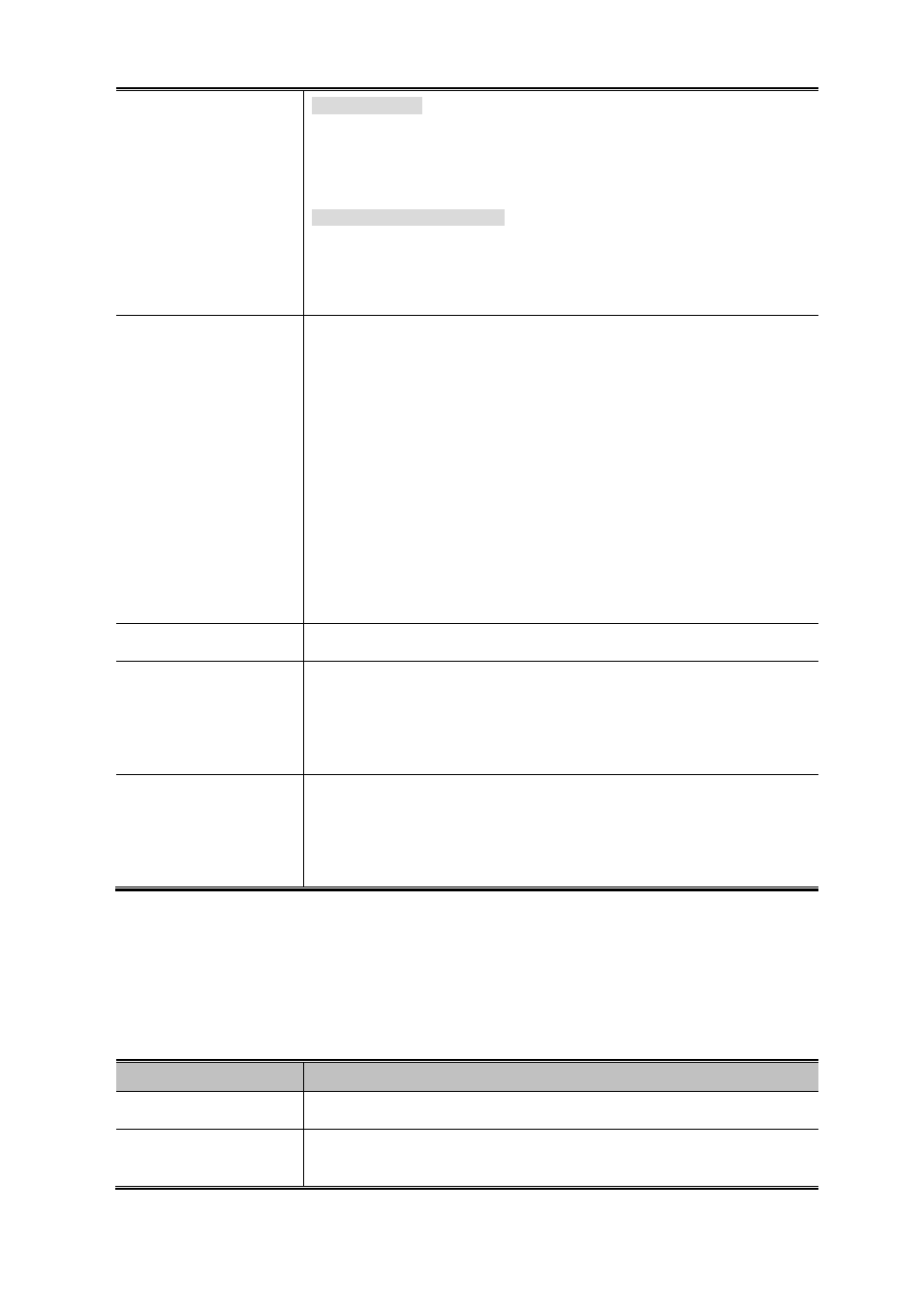PLANET WGSD-10020 User Manual
Page 290

User’s Manual of WGSD-10020 Series
290
Streaming Video - for use by broadcast or multicast based video content
distribution and other similar applications supporting streaming video services
that require specific network policy treatment. Video applications relying on TCP
with buffering would not be an intended use of this application type.
Video Signaling (conditional) - for use in network topologies that require a
separate policy for the video signaling than for the video media. This application
type should not be advertised if all the same network policies apply as those
advertised in the Video Conferencing application policy.
•
Tag
Tag indicating whether the specified application type is using a 'tagged’ or an
'untagged’ VLAN.
Untagged indicates that the device is using an untagged frame format and as
such does not include a tag header as defined by IEEE 802.1Q-2003. In this
case, both the VLAN ID and the Layer 2 priority fields are ignored and only the
DSCP value has relevance.
Tagged indicates that the device is using the IEEE 802.1Q tagged frame format,
and that both the VLAN ID and the Layer 2 priority values are being used, as well
as the DSCP value. The tagged format includes an additional field, known as the
tag header. The tagged frame format also includes priority tagged frames as
defined by IEEE 802.1Q-2003.
•
VLAN ID
VLAN identifier (VID) for the port as defined in IEEE 802.1Q-2003
•
L2 Priority
L2 Priority is the Layer 2 priority to be used for the specified application type. L2
Priority may specify one of eight priority levels (0 through 7), as defined by IEEE
802.1D-2004. A value of 0 represents use of the default priority as defined in
IEEE 802.1D-2004.
•
DSCP
DSCP value to be used to provide Diffserv node behavior for the specified
application type as defined in IETF RFC 2474. DSCP may contain one of 64
code point values (0 through 63). A value of 0 represents use of the default
DSCP value as defined in RFC 2475.
Port Policies Configuration
Every port may advertise a unique set of network policies or different attributes for the same network policies, based on the
authenticated user identity or port configuration.
Object
Description
•
Port
The port number for which the configuration applies.
•
Policy ID
The set of policies that shall apply for a given port. The set of policies is selected
by checkmarking the checkboxes that corresponds to the policies
